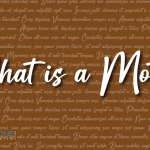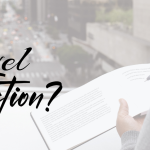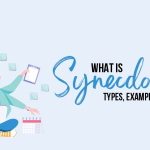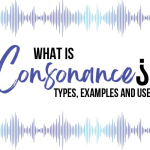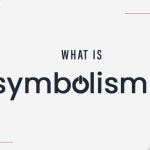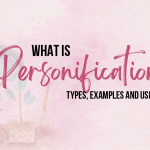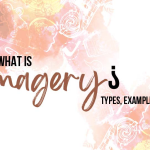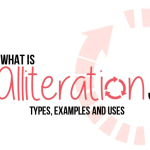“We came, we saw, we conquered” – Julius Caesar written by William Shakespeare.
The phrase “we came, we saw, we conquered,” the pronoun “we” is used as an literary device “Anaphor”. It refers back to the subject of the sentence, which is “we,” and helps to establish a connection between the three clauses.
The use of the anaphor “we” helps to create a sense of continuity and coherence within the phrase, as it avoids repeating the subject noun “we” in each clause.
It also adds emphasis to the actions of the subject, as the repetition of “we” helps to reinforce the idea that the subject was the agent of the actions described in the clauses.
In this case, you would be asking what is anaphor? In the phrase “we” also serves to create a sense of unity and shared purpose among the subject, as it suggests that they were all involved in the actions described.
This helps to convey a sense of pride and accomplishment, as the subject is able to take credit for the actions described in the clauses.
An anaphor is a word or phrase that refers back to a noun or noun phrase that has previously been stated. It is used to prevent repeating the same term or noun phrase, which can be tedious and time-consuming.
The literary device ” Anaphor” is usually a pronoun like “he,” “she,” “it,” “they,” or “them,” or a relative pronoun like “who,” “whom,” or “whose.” An anaphor can also be referred to as a back-reference or a reflexive pronoun.
An anaphor is employed in a writing or dialogue to establish consistency. It aids in connecting thoughts and concepts and creating a sense of continuity and flow.
It can also be used to emphasise or call attention to a specific noun or noun phrase. Consider this sentence: “The president, who had just been elected a year previously, was already facing impeachment.”
In this line, the relative pronoun “who” is an anaphor that relates back to the noun “president,” emphasising the president’s recent election.
You may also like: Top 10 Real Life Stories to Read Online
Anaphors are classified into three types: personal pronouns, reflexive pronouns, and relative pronouns.
- Personal Pronouns
Personal pronouns are anaphors that are used to refer to a specific person or thing. Words like “I,” “me,” “you,” “he,” “she,” “it,” “we,” “they,” and “who” are examples of personal pronouns.
Personal pronouns are used to avoid repeating the same noun or noun phrase, which can be tedious and time-consuming.
They are employed to create a sense of continuity and flow in a document or conversation by establishing coherence. It must be used carefully to minimise confusion and maintain consistency in a work or discussion.
It is, for example, considered impolite to use a personal pronoun without first presenting the noun or noun phrase to which it relates. Furthermore, it is critical to select the appropriate personal pronoun for the context, as employing the incorrect pronoun can cause misunderstanding or ambiguity.
For example, consider the following passage from a novel:
Elizabeth Bennet walked through the doors of the assembly room, her eyes scanning the crowd for her friend Charlotte Lucas. She finally spotted her standing near the punch bowl and made her way over. ‘Charlotte, there you are! I’ve been looking for you everywhere.’
In this passage, the personal pronoun “she” is used as an anaphor to refer back to the noun “Elizabeth Bennet.” This helps to avoid repeating “Elizabeth Bennet” and to establish a connection between the two clauses. The use of the anaphor “she” also helps to create a sense of continuity and flow in the passage, as it avoids the need to repeat the noun “Elizabeth Bennet” and helps to link the two clauses together.
Personal pronouns are an important tool for writers to use in novels, as they help to avoid repetition and create a sense of coherence and flow in the text. By using them correctly, writers can create a clear and cohesive narrative that is easy for readers to follow. - Reflexive Prounous
Reflexive pronouns are a type of anaphor that are used to refer back to the subject of a sentence or clause. Reflexive pronouns include words like “myself,” “yourself,” “herself,” “himself,” “itself,” “ourselves,” and “themselves.”
Reflexive pronouns are used to avoid repeating the same noun or noun phrase over and over again, which can be repetitive and cumbersome. They are used to establish coherence in a text or conversation and to create a sense of continuity and flow.
It is important to use reflexive pronouns correctly in order to avoid confusion and to maintain coherence in a text or conversation. For example, it is generally considered poor form to use a reflexive pronoun without first introducing the noun or noun phrase that it refers to. Additionally, it is important to choose the correct reflexive pronoun for the context, as using the wrong pronoun can create confusion or ambiguity.
For example, consider the following passage from a novel:
“Jane Austen sat at her writing desk, staring at the blank page in front of her. She had been struggling to find the right words for her new novel, but so far nothing seemed to come to her. She sighed and leaned back in her chair, rubbing her temples. ‘Maybe I just need to take a break and clear my head,’ she thought to herself.”
In this passage, the reflexive pronoun “herself” is used as an anaphor to refer back to the subject “Jane Austen.” This helps to avoid repeating “Jane Austen” and to establish a connection between the two clauses. The use of the anaphor “herself” also helps to create a sense of continuity and flow in the passage, as it avoids the need to repeat the noun “Jane Austen” and helps to link the two clauses together. - Relative Pronoun
Relative pronouns are a type of anaphor that are used to introduce a clause that provides additional information about a noun or noun phrase. Relative pronouns include words like “who,” “whom,” “whose,” “that,” and “which.”
Relative pronouns are used to avoid repeating the same noun or noun phrase over and over again, which can be repetitive and cumbersome. They are used to establish coherence in a text or conversation and to create a sense of continuity and flow.
Relative pronouns are used to link clauses or phrases to nouns or pronouns. They are often used to introduce a clause that provides additional information about a noun or pronoun. For example:- “The man, who was wearing a red hat, walked by me.”
- “The book that I read last night was really interesting.”
In these examples, the relative pronouns “who” and “that” are used to introduce clauses that provide more information about the nouns “man” and “book,” respectively. In novels, relative pronouns are often used to provide more information about characters or events in the story.
They can be a useful way for authors to add depth and complexity to their writing.
The conclusion would be, anaphors are words or phrases that refer back to a previously mentioned noun or noun phrase in order to establish continuity and coherence in writing.
Anaphors must be used correctly to maintain consistency and clarity in writing, and they can be a great tool for writers to add depth and complexity to their work. They are an important part of language and writing and play a key role in good communication.








